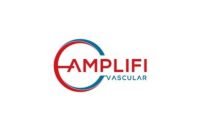Contact:
Beth Bales
Senior Communications Manager, SVS
(312) 334-2316
ROSEMONT, ILL. (Dec. 1, 2022) – The Society for Vascular Surgery (SVS) has published an update to the SVS/American Venous Forum 2011 clinical practice guideline (CPG) on the care of patients with varicose veins. This guideline update was developed in collaboration with the American Venous Forum and the American Vein and Lymphatic Society.
The “2022 Society for Vascular Surgery, American Venous Forum, and American Vein and Lymphatic Society Clinical Practice Guidelines for the Management of Varicose Veins of the Lower Extremities” is the first of two parts and presents evidence-based recommendations on the diagnosis of superficial venous disease and treatment of superficial truncal venous reflex. The updated guideline has also been endorsed by Society for Vascular Medicine and the International Union of Phlebology.
Superficial venous disease of the lower extremities is due to refluxing valves, which creates a situation of venous hypertension. This is manifested as leg heaviness, pain, varicosities and occasionally skin changes and ulceration. This is an extremely common disease and primarily affects people as they age, although the disease can be seen in younger patients.
The first step is accurate and consistent diagnosis of the reflux in the superficial veins. Duplex ultrasound scanning is recommended as the diagnostic test of choice. Duplex ultrasound scanning – which delivers no radiation – is considered best due to standardized protocols for sonographers and standardized definitions for abnormal reflux. The guideline also recommends using trained vascular ultrasonographers in an accredited vascular laboratory.
The guideline recommends that patients with symptomatic varicose veins and reflux are best treated with intervention rather than prolonged long-term compression stockings. Use of compression stockings, while an important mode of therapy, does not relieve the underlying cause of the venous reflux and insufficiency. The techniques to treat systematic axial vein reflux are primarily endoluminal with thermal or non-thermal ablation techniques rather than the older surgical vein stripping. Treatment of tributary varicosities can be by direct phlebectomy or ultrasound-guided foam sclerotherapy.
The guideline also addresses the role of treatment of incompetent perforator veins in patients with varicose veins, as well as the limitations of perforator vein treatment in patients with mild to moderate venous insufficiency. Lastly, the guideline recommends performing truncal ablation in the superficial veins combined with varicose vein treatment during the same session, if possible.
“The new SVS/AVF/AVLS guideline on varicose veins is the first high-quality multi-society guideline where each recommendation is based on an independent systematic review and meta-analysis,” said Peter Gloviczki, MD, co-chair of the guideline writing group. “The primary goal was to provide recommendations supported by the latest scientific data, with a secondary goal that adopting these guidelines will markedly decrease the number of inappropriate procedures performed in patients with chronic venous disease.”
Read the new guideline at vascular.org/JVSVL-VaricoseVeinUpdate. It will be published in an upcoming issue of the Journal of Vascular Surgery: Venous and Lymphatic Disorders.
# # #
About the Society for Vascular Surgery
The Society for Vascular Surgery is the leading not-for-profit, professional medical society on establishing causes and treatments for vascular disease. SVS seeks to advance excellence and innovation in vascular health through education, advocacy, research and public awareness and is composed of specialty-trained vascular surgeons who are dedicated to providing comprehensive care for vascular disease. For more information visit www.vascular.org. Follow the SVS on Facebook @VascularHealth, Twitter @VascularSVS and Instagram @societyforvascularsurgery.






